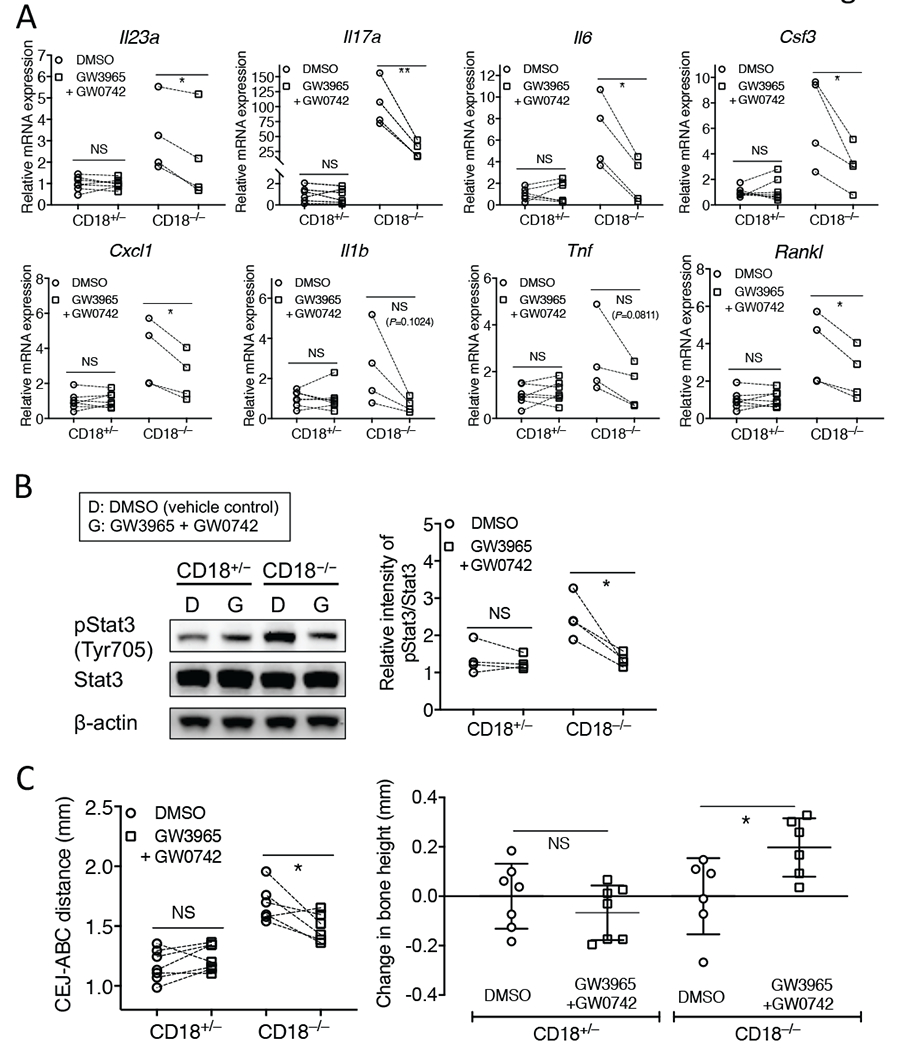Figure 5. Combined treatment with LXR agonist GW3965 and the PPARβ/δ agonist GW0742 regulates periodontal inflammation and bone levels in CD18−/− mice.

18-week-old CD18+/− and CD18−/− mice were locally microinjected in the palatal gingiva of the 2nd molar with a combination of GW3965 and GW0742 (each at 8.1 nmol; left side) or with DMSO vehicle control (right side). After 72h, the mice were euthanized. (A) Dissected gingiva were processed for quantitative real-time PCR to determine mRNA expression of the indicated cytokines. Results were normalized to Gapdh mRNA and presented as fold change in the transcript levels relative to DMSO injection sites in CD18+/− mice (assigned an average value of 1). (B) Gingiva were processed for immunoblotting to detect phosphorylated Stat3 (pStat3) (left panel). The relative intensity of immunoblotting bands of pStat3 and total Stat3 was quantified by densitometry (right panel). The pStat3/Stat3 ratio values were then normalized to the smallest pStat3/Stat3 ratio value in the CD18+/− DMSO control group, which was set as 1. (C) Defleshed maxillae were used to measure the bone heights (distance between the cementoenamel junction [CEJ] and alveolar bone crest [ABC]) (left panel). The change in bone heights was calculated relative to the corresponding vehicle control group (right panel). In A, C (left panel), and B (right panel), the pair of data for each mouse is connected by a line (n = 4-7 mice/group). In C (right panel), data are means ± SD (n = 6-7 mice/group). *P < 0.05 and **P < 0.01 (Student’s paired t test). NS, non-significant.
